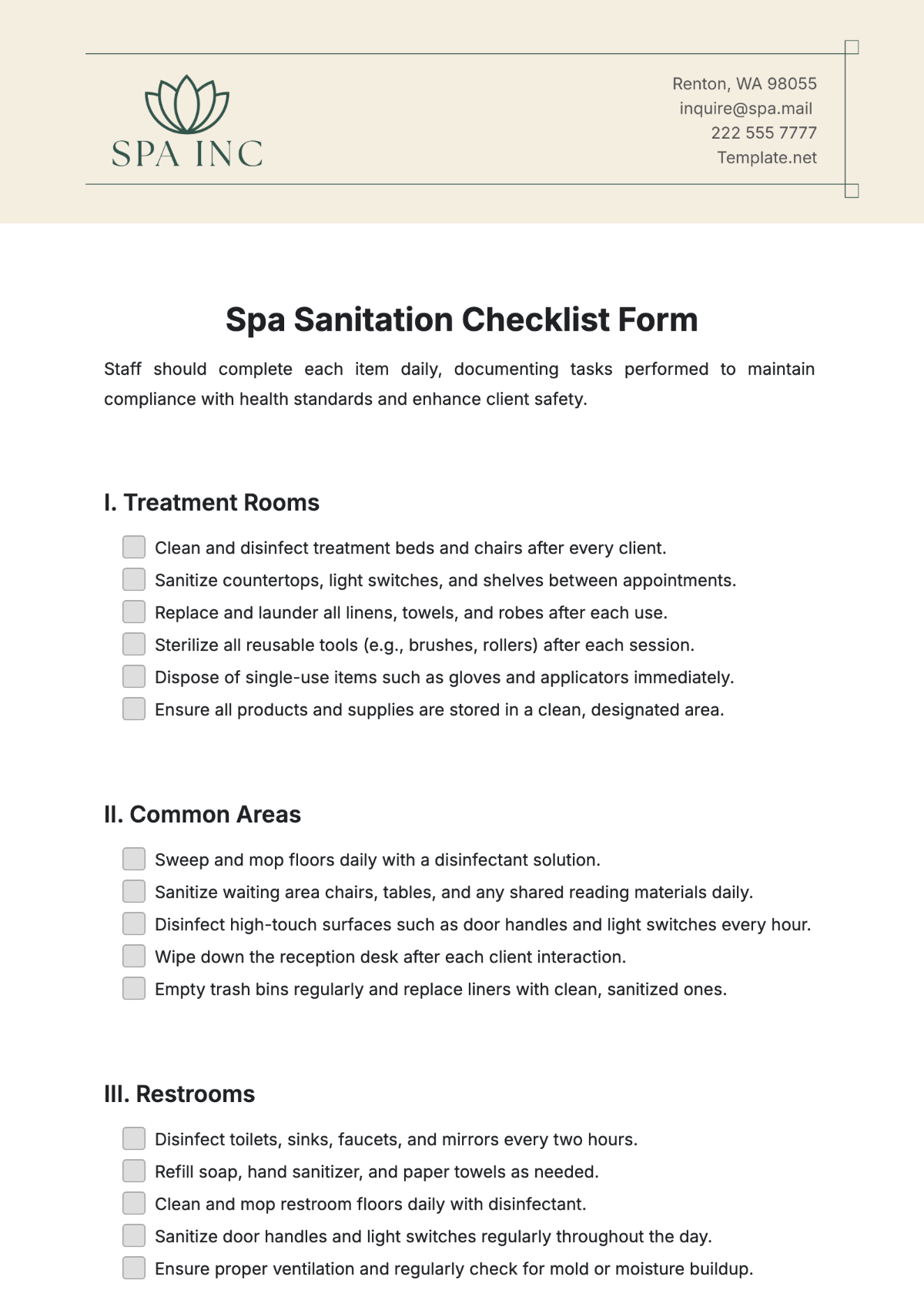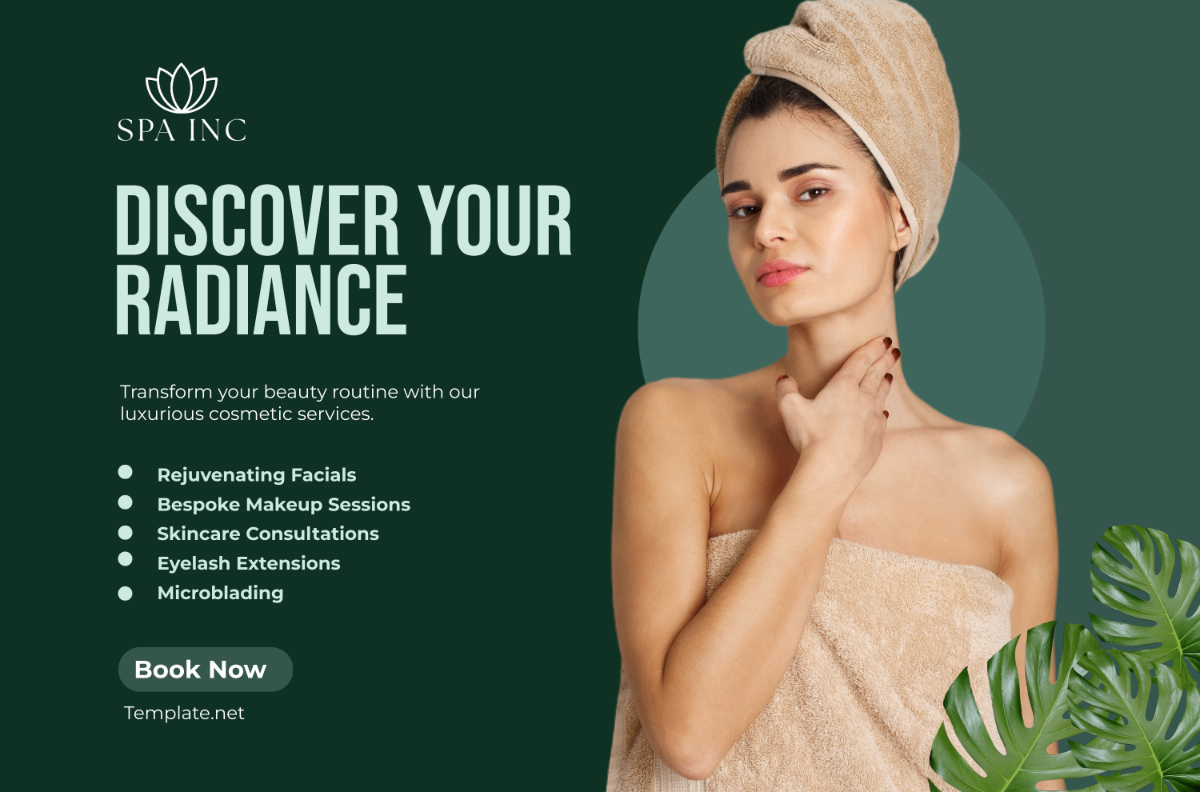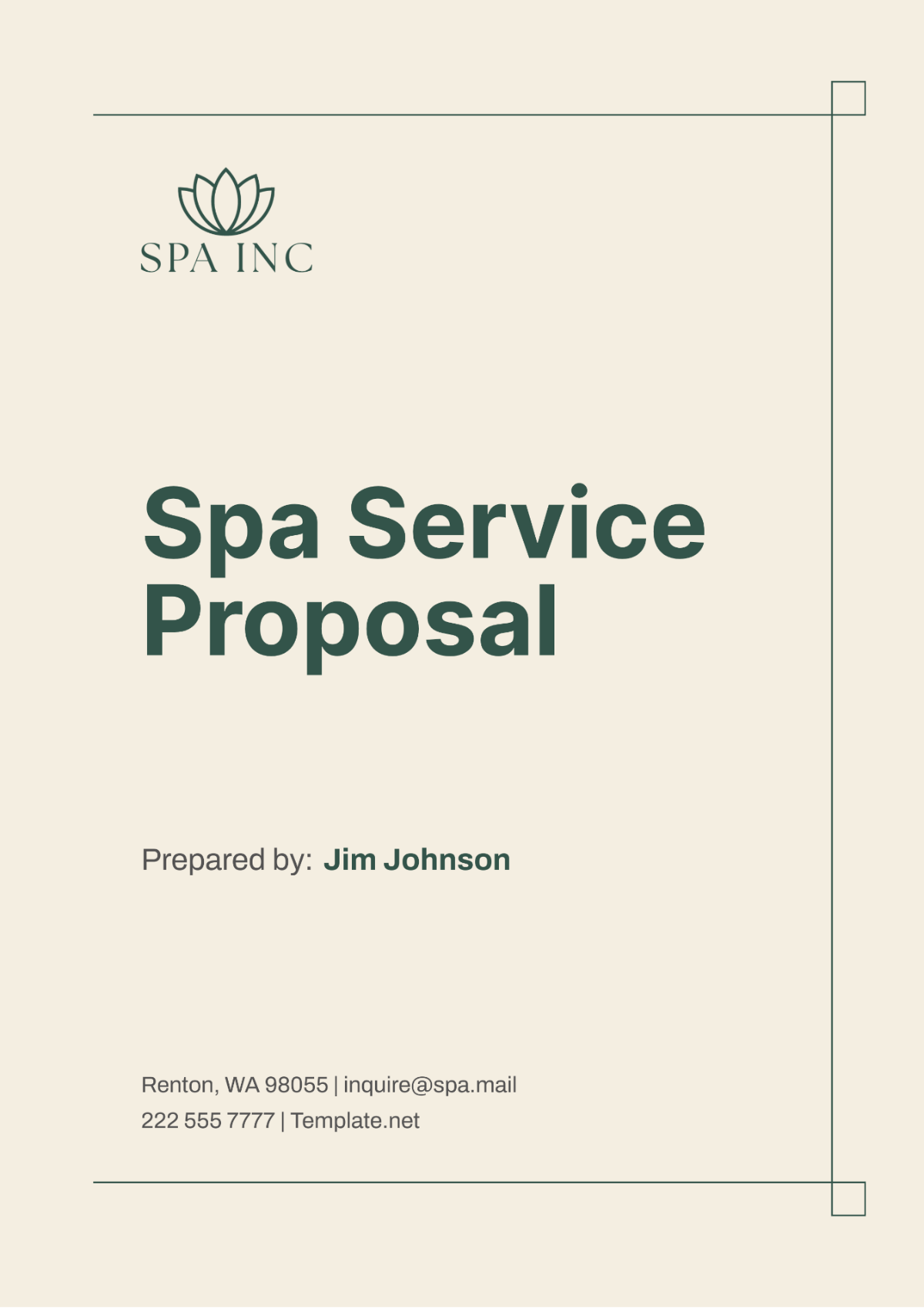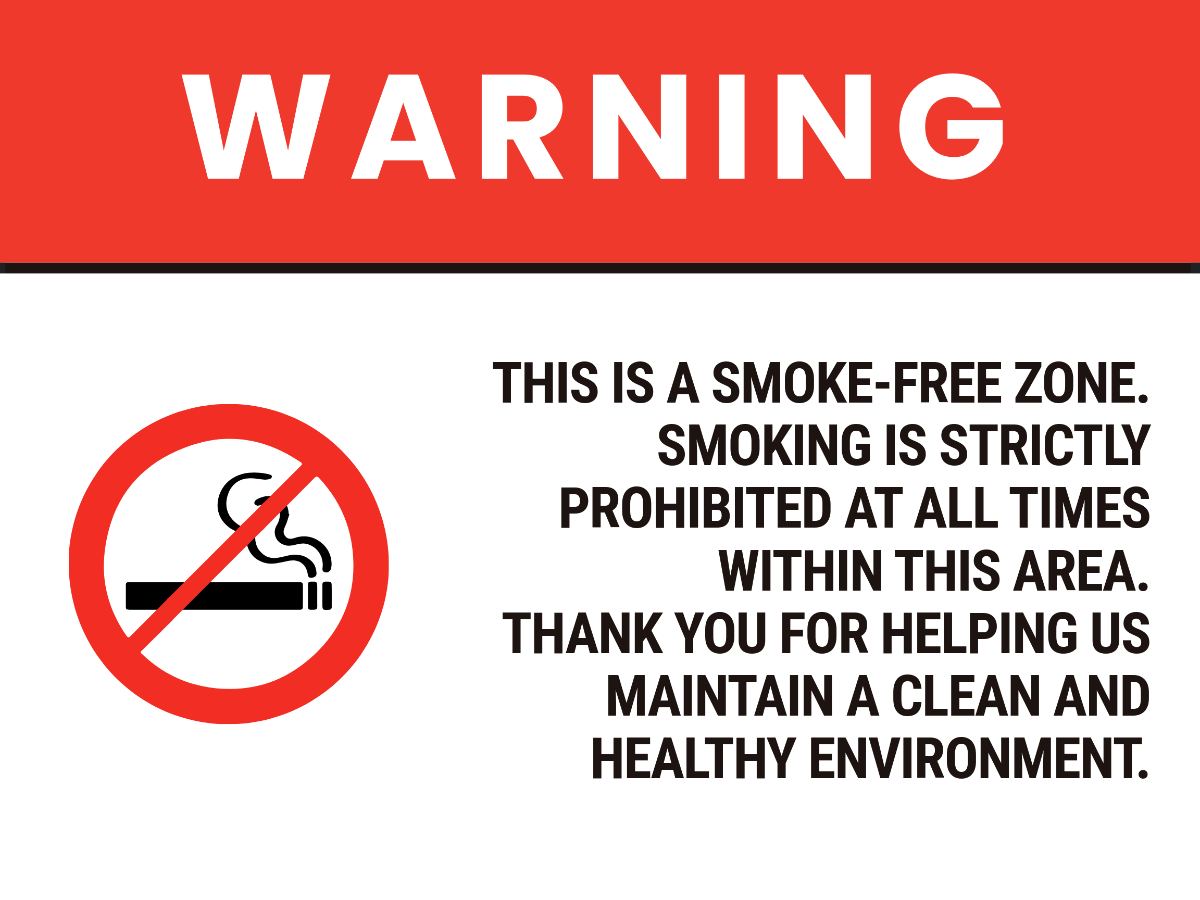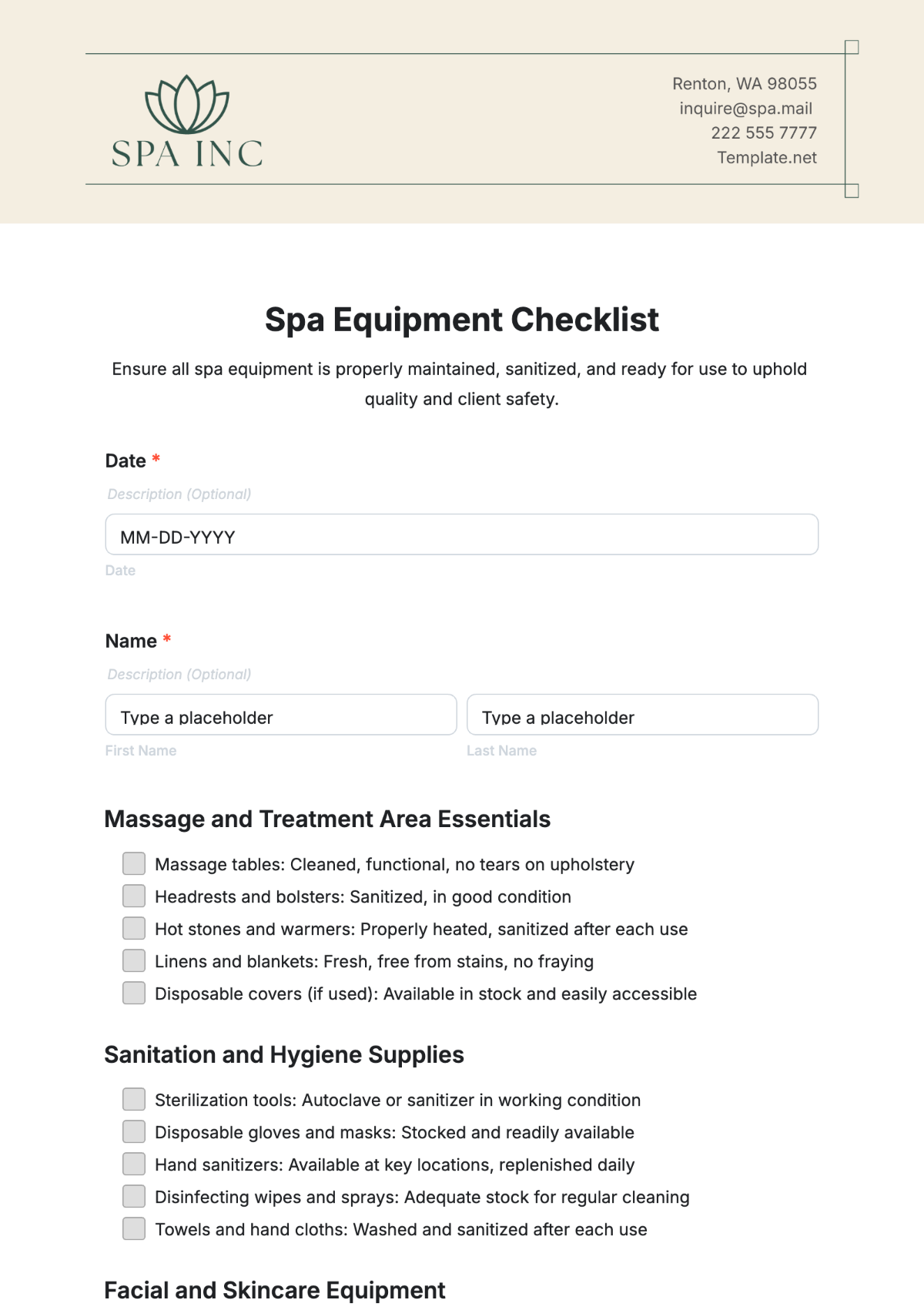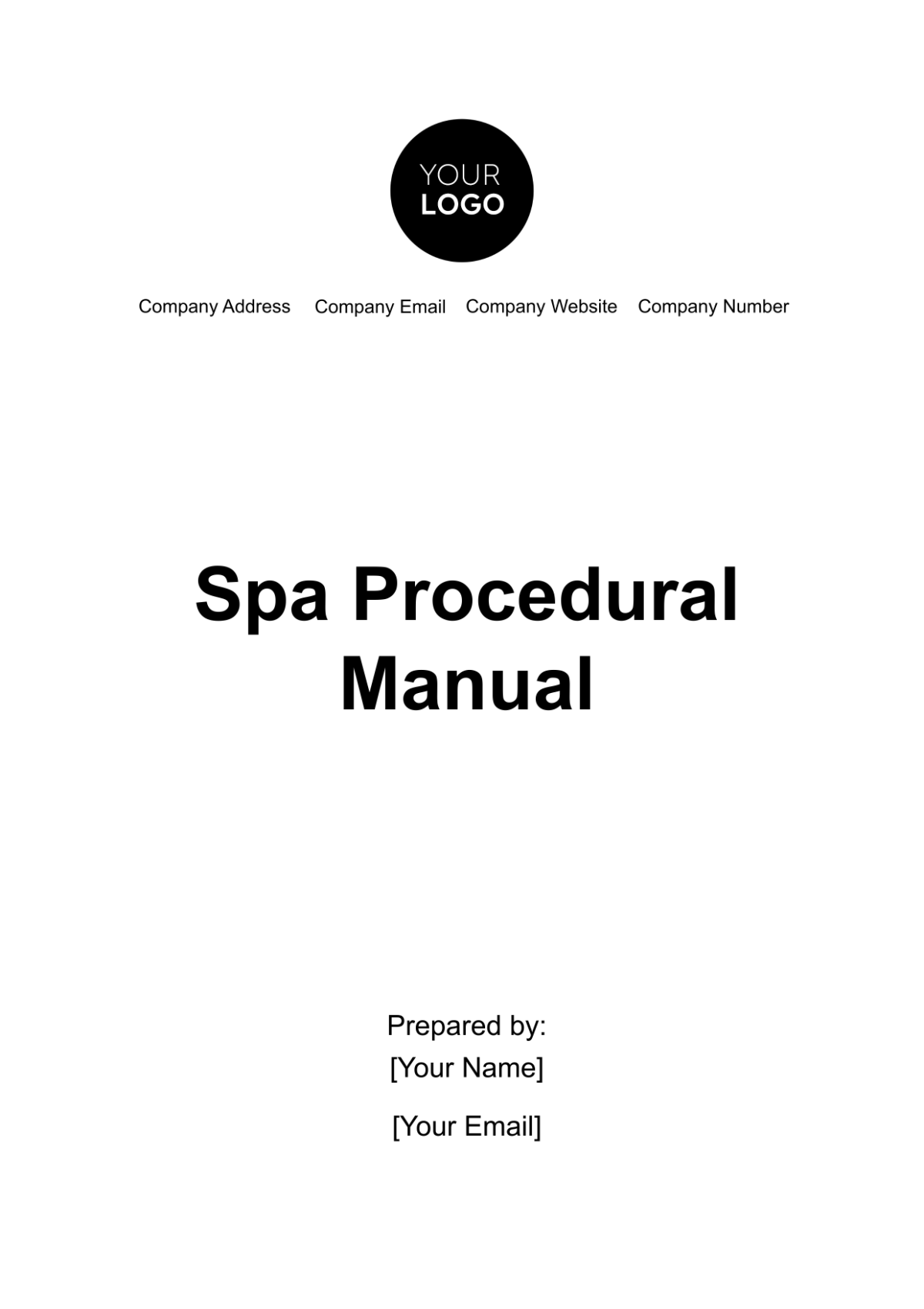Spa Project Strategy
I. Executive Summary
A. Project Overview
[Your Company Name] aims to establish a luxury spa that offers a holistic approach to wellness, combining traditional and modern therapies in a serene and relaxing environment. The spa will cater to individuals seeking rejuvenation, relaxation, and therapeutic treatments. Our objective is to create a destination spa that provides exceptional service, state-of-the-art facilities, and a range of treatments that cater to the diverse needs of our clientele.
B. Key Success Factors
The success of our spa project hinges on several critical factors:
Quality of Services: Delivering high-quality treatments and services that meet the expectations of our clients.
Exceptional Customer Experience: Providing a personalized and memorable experience for each client.
Skilled and Trained Staff: Employing well-trained and experienced therapists and staff members.
Strategic Location: Choosing a location that is easily accessible and has a high footfall of potential clients.
Effective Marketing: Implementing a robust marketing strategy to attract and retain clients.
C. Project Scope
The project encompasses the design, development, and launch of the spa. It includes the selection of the location, interior design and layout, service menu development, staff recruitment and training, marketing and promotional activities, and operational procedures. The spa will offer a range of services, including massages, facials, body treatments, hydrotherapy, and wellness programs.
II. Market Analysis
A. Industry Overview
The global spa industry has witnessed significant growth in recent years, driven by increasing consumer awareness of health and wellness, rising disposable incomes, and the growing popularity of wellness tourism. The industry encompasses various segments, including day spas, destination spas, medical spas, and resort/hotel spas. According to recent market reports, the global spa market is expected to continue its upward trajectory, with a compound annual growth rate (CAGR) of 6% over the next five years.
B. Target Market
Our target market includes affluent individuals aged 25-65 who are health-conscious and seek premium wellness services. This demographic values quality, exclusivity, and personalized experiences. We will primarily focus on urban professionals, retirees, tourists, and expatriates.
Table: Target Market Segmentation
Segment | Age Range | Characteristics | Preferences |
|---|---|---|---|
Urban Professionals | 25-45 | High disposable income, busy lifestyles | Stress relief, quick rejuvenation |
Retirees | 55-65 | Time-rich, health-focused | Long-duration wellness programs |
Tourists | 30-50 | Seeking local experiences, relaxation | Unique treatments, spa packages |
Expatriates | 35-60 | High disposable income, interest in wellness | Regular treatments, holistic therapies |
C. Competitive Analysis
A thorough analysis of the local spa market reveals several key competitors offering a range of services. These competitors vary in size, market positioning, and service quality. Our primary competitors include established luxury spas, wellness centers, and hotel spas.
III. Strategic Planning
A. Vision and Mission Statements
Vision: To be the leading luxury spa destination in the region, renowned for our commitment to wellness, exceptional service, and innovative treatments.
Mission: Our mission is to enhance the well-being of our clients through a holistic approach to wellness, providing high-quality services in a serene and luxurious environment.
B. Strategic Goals
Service Excellence: To provide unparalleled spa services that exceed client expectations.
Customer Loyalty: To build a loyal client base through personalized experiences and exceptional service.
Innovation: To continuously innovate and introduce new treatments and services.
Sustainability: To implement sustainable practices in all aspects of our operations.
C. Key Performance Indicators (KPIs)
To measure our progress and success, we will track the following KPIs:
Client Satisfaction: Measured through feedback surveys and repeat visit rates.
Revenue Growth: Monthly and annual revenue targets.
Employee Performance: Staff training completion rates and performance reviews.
Market Share: Increase in market share within the local spa industry.
IV. Project Design and Development
A. Concept and Theme
The spa will feature a contemporary design with elements inspired by nature, creating a calming and rejuvenating atmosphere. The theme will blend traditional wellness practices with modern amenities, offering clients a unique and immersive experience. The interior design will include natural materials, soft lighting, and tranquil music to enhance the overall ambiance.
B. Service Offerings
Our spa will offer a diverse range of services designed to cater to various wellness needs. These services include:
Massages: Swedish, deep tissue, hot stone, aromatherapy, and reflexology.
Facials: Anti-aging, hydrating, brightening, and custom treatments.
Body Treatments: Scrubs, wraps, detox therapies, and cellulite reduction.
Hydrotherapy: Whirlpool baths, Vichy showers, and hydro-massage.
Wellness Programs: Yoga, meditation, nutritional counseling, and fitness sessions.
C. Facility Layout
The spa will be designed to maximize comfort and functionality. The layout will include:
Reception Area: Welcoming and spacious, with a seating area for clients.
Treatment Rooms: Private and well-equipped, each room designed for specific treatments.
Relaxation Lounge: A quiet space for clients to unwind before and after treatments.
Hydrotherapy Area: Featuring whirlpool baths and Vichy showers.
Fitness Studio: Equipped with yoga mats, weights, and other fitness equipment.
Table: Facility Layout
Area | Features |
|---|---|
Reception Area | Welcome desk, seating area, retail products |
Treatment Rooms | Massage tables, facial equipment, soundproof |
Relaxation Lounge | Comfortable seating, refreshments, soft music |
Hydrotherapy Area | Whirlpool baths, Vichy showers |
Fitness Studio | Yoga mats, weights, fitness equipment |
V. Marketing Strategy
A. Branding and Positioning
Our brand will be positioned as a luxury wellness destination offering premium services and exceptional customer experiences. The brand identity will reflect elegance, tranquility, and rejuvenation. We will use a sophisticated color palette, elegant fonts, and high-quality imagery in our branding materials.
B. Marketing Channels
To reach our target market, we will utilize a mix of online and offline marketing channels:
Online Marketing: We will leverage social media platforms, such as Instagram, Facebook, and LinkedIn, to showcase our services, share client testimonials, and run targeted advertising campaigns. Our website will feature an online booking system, detailed service descriptions, and a blog with wellness tips.
Offline Marketing: We will collaborate with local businesses, hotels, and tourism boards to promote our spa. Print advertising in lifestyle magazines and brochures distributed at strategic locations will also be part of our marketing efforts.
C. Promotional Activities
To attract and retain clients, we will implement various promotional activities:
Introductory Offers: Special discounts for first-time clients and package deals.
Loyalty Programs: Membership plans and rewards for repeat clients.
Events and Workshops: Hosting wellness workshops, yoga sessions, and seasonal events to engage with the community.
Partnerships: Collaborating with influencers, wellness bloggers, and local businesses to expand our reach.
VI. Financial Planning
A. Budgeting
Effective financial planning is crucial for the successful launch and operation of the spa. The initial investment includes costs related to property acquisition or leasing, interior design and renovations, equipment purchase, and marketing. Ongoing operational costs will cover staff salaries, utilities, supplies, maintenance, and marketing activities.
Table: Initial Investment Breakdown
Expense Category | Estimated Cost (USD) |
|---|---|
Property Acquisition/Lease | 300,000 |
Interior Design & Renovations | 150,000 |
Equipment Purchase | 100,000 |
Marketing & Promotion | 50,000 |
Initial Staff Salaries | 75,000 |
Miscellaneous Expenses | 25,000 |
Total Initial Investment | 700,000 |
Ongoing operational costs will be monitored and controlled to ensure profitability. Regular financial reviews will be conducted to track expenses and make necessary adjustments.
Table: Ongoing Operational Costs
Expense Category | Monthly Cost (USD) |
|---|---|
Staff Salaries | 20,000 |
Utilities | 5,000 |
Supplies & Materials | 3,000 |
Maintenance | 2,000 |
Marketing | 4,000 |
Miscellaneous Expenses | 1,000 |
Total Monthly Costs | 35,000 |
B. Revenue Projections
Revenue projections are based on the expected number of clients, average transaction value, and the range of services offered. We anticipate steady growth in client numbers as brand awareness increases and our marketing efforts yield results.
Table: Revenue Projections
Year | Number of Clients | Average Transaction Value (USD) | Annual Revenue (USD) |
|---|---|---|---|
1 | 5,000 | 100 | 500,000 |
2 | 7,500 | 110 | 825,000 |
3 | 10,000 | 120 | 1,200,000 |
By the end of the third year, we expect to achieve a stable client base and consistent revenue growth.
C. Funding and Financing
To finance the initial investment and cover initial operational costs, we will explore various funding options, including personal savings, bank loans, and potential investors. A detailed financial plan and business proposal will be prepared to attract investors and secure loans.
Table: Funding Sources
Source | Amount (USD) |
|---|---|
Personal Savings | 200,000 |
Bank Loan | 300,000 |
Investor Funding | 200,000 |
Total Funding | 700,000 |
Effective financial risk management strategies will be implemented to mitigate potential risks, ensuring the spa remains financially viable.
VII. Operational Plan
A. Staffing and Human Resources
The success of our spa depends heavily on the skills and professionalism of our staff. We will recruit experienced and certified therapists, aestheticians, and support staff. Comprehensive training programs will be implemented to ensure all employees meet the high standards of [Your Company Name].
Table: Staffing Requirements
Position | Number of Employees | Monthly Salary (USD) |
|---|---|---|
Spa Manager | 1 | 5,000 |
Therapists | 5 | 3,000 each |
Aestheticians | 3 | 3,000 each |
Receptionists | 2 | 2,000 each |
Housekeeping Staff | 2 | 1,500 each |
Total Staff | 13 | 35,000 |
B. Operational Procedures
To ensure smooth and efficient operations, detailed Standard Operating Procedures (SOPs) will be developed for all aspects of the spa's operations. This includes client handling, treatment protocols, hygiene standards, and emergency procedures. Regular audits and reviews will be conducted to maintain high standards and identify areas for improvement.
C. Technology Integration
Modern technology will be integrated into our operations to enhance efficiency and customer experience. This includes an online booking system, client management software, and digital payment options. Additionally, we will use data analytics to track client preferences and optimize service offerings.
Table: Technology Integration
Technology | Purpose |
|---|---|
Online Booking System | Simplifies appointment scheduling for clients |
Client Management Software | Manages client information and preferences |
Digital Payment Options | Facilitates secure and convenient transactions |
Data Analytics | Tracks client trends and optimizes services |
VIII. Risk Management
A. Risk Identification
Identifying potential risks is the first step in developing effective risk management strategies. Risks associated with the spa project include financial risks, operational risks, market risks, and legal/regulatory risks.
B. Risk Mitigation Strategies
To mitigate identified risks, we will implement a range of strategies:
Financial Risks: Diversify revenue streams, maintain a contingency fund, and regularly review financial performance.
Operational Risks: Implement comprehensive SOPs, conduct regular staff training, and perform routine equipment maintenance.
Market Risks: Stay updated with industry trends, adapt services to client preferences, and diversify marketing efforts.
Legal/Regulatory Risks: Ensure compliance with local regulations, obtain necessary licenses, and maintain proper documentation.
C. Contingency Planning
Contingency plans will be developed to address unforeseen circumstances, ensuring business continuity. This includes backup plans for staff shortages, supply chain disruptions, and financial setbacks. Regular reviews and updates of contingency plans will be conducted to keep them relevant.
Table: Contingency Plans
Risk Category | Contingency Plan |
|---|---|
Staff Shortages | Cross-train staff, maintain a list of on-call staff |
Supply Chain Disruptions | Identify alternative suppliers, stock essential items |
Financial Setbacks | Maintain contingency fund, reduce non-essential expenses |
IX. Implementation Plan
A. Timeline and Milestones
The implementation plan outlines the timeline and key milestones for the spa project. This ensures all tasks are completed on schedule and resources are allocated efficiently.
Table: Project Timeline and Milestones
Phase | Duration | Key Milestones |
|---|---|---|
Planning and Design | 3 months | Finalize design, secure permits |
Construction and Setup | 6 months | Complete renovations, install equipment |
Recruitment and Training | 2 months | Hire staff, conduct training programs |
Marketing Launch | 1 month | Launch marketing campaigns |
Grand Opening | 1 month | Open doors to clients |
B. Resource Allocation
Resources, including financial, human, and material resources, will be allocated based on the project timeline. Efficient resource management will ensure all phases of the project are executed smoothly.
C. Monitoring and Evaluation
Regular monitoring and evaluation will be conducted to track progress and address any issues promptly. Performance metrics will be established to measure the success of the project, including client satisfaction, revenue growth, and staff performance. Feedback from clients and staff will be used to make continuous improvements.
By following this comprehensive strategy, [Your Company Name] aims to establish a successful and sustainable spa that provides exceptional service and enhances the well-being of our clients. The detailed planning and execution outlined in this document will guide our efforts in achieving our goals and maintaining high standards in all aspects of the spa's operations.


